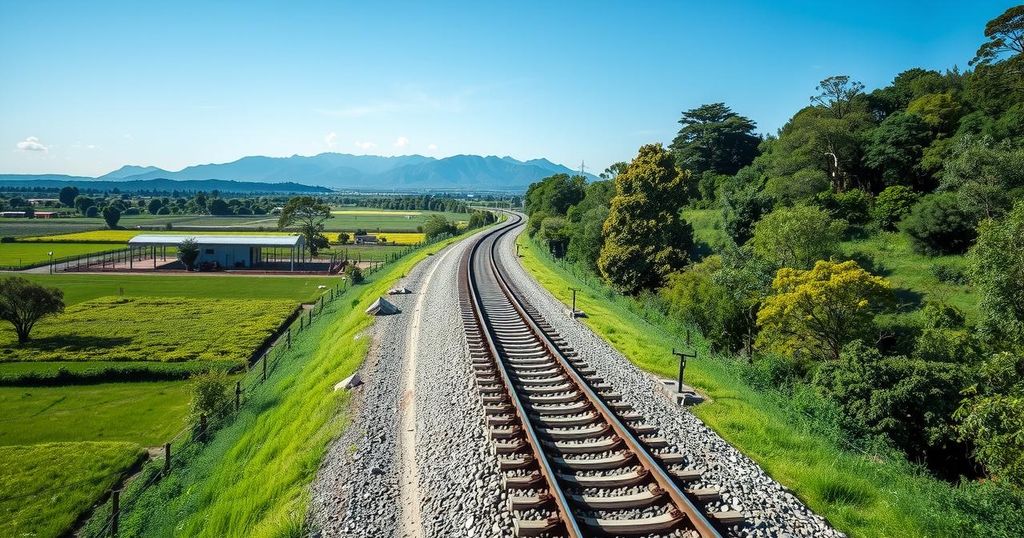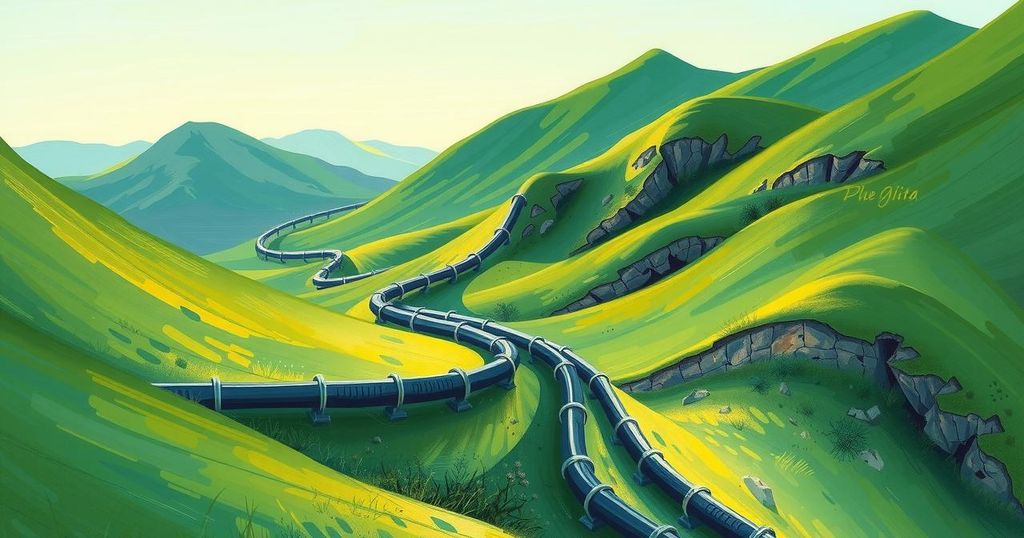Tanzania and Burundi are launching a $2.15 billion railway project to improve trade and mineral transportation, mainly nickel, between the countries. Backed by Chinese construction firms and the AfDB, the railway will enhance cross-border trade and transport capacity. Though it promises economic benefits, concerns about debt and environmental impact persist; thus, the project warrants close scrutiny.
Tanzania and Burundi have embarked on a significant partnership to establish a railway project aimed at enhancing trade and transportation of minerals between the two nations. This $2.15 billion initiative will connect Uvinza in Tanzania to Musongati in Burundi, and is being developed by the esteemed Chinese companies, China Railway Engineering Group Ltd and China Railway Engineering Design and Consulting Group. The project is designed to facilitate the transport of nickel, particularly through the bustling port of Dar es Salaam.
At the recent signing ceremony, Tanzania’s Transport Minister, Makame Mbarawa, articulated the railway’s critical role, affirming that,”The signing of this contract is the coming to fruition of a bilateral agreement between the governments of Tanzania and Burundi.” He stressed the railway line’s significance for the export of nickel and the enhancement of cross-border trade, which will be crucial for the economies involved.
The railway will measure 282 kilometers (approximately 175 miles), with an anticipated capacity to transport three million metric tons of minerals annually. This pivotal infrastructure project has also garnered support from the African Development Bank (AfDB), marking its inaugural financing involvement in Tanzania’s railway initiatives. Finance Minister Mwigulu Nchemba remarked, “This is a very significant moment because it marks the first foray of the AfDB in the financing of Tanzania’s railway projects.”
China’s investments in Africa have seen substantial growth in recent years, primarily through its Belt and Road Initiative, underscoring the increased investment and influence of Chinese corporations on the continent. The partnership between Tanzania and Burundi aligns with this trend, as China has now grown to become Africa’s largest trading partner and creditor.
Given the rising volatility in nickel prices, which have nearly doubled in the past decade, there is a compelling need for efficient transportation solutions. The railway not only intends to ease exportation but also aims to comprehensively integrate regional economies, leveraging Tanzania’s geographic position to transport nickel from Burundi’s rich mineral deposits, particularly at Musongati.
Moreover, the railway project is part of an overarching strategy to enhance connectivity for mining and agricultural products across Eastern and Central Africa. The estimated completion timeline is within 72 months, inclusive of comprehensive reviews following construction.
While the promise of economic growth and infrastructure development is strong, there are escalating concerns among citizens and stakeholders regarding potential long-term impacts. Critics express anxiety about rising debt levels linked to such substantial investments, questioning if the projects will serve the enduring interests of African nations or predominantly favor foreign investors.
Nonetheless, the influx of funding from Chinese financiers might provide fresh prospects for job creation and economic advancement. Earlier this year, President Xi Jinping committed approximately $51 billion to bolster African infrastructure, reflecting his solidarity towards enhancing economic ties and development initiatives across the continent.
This initiative prompts discussions regarding the environmental and social ramifications associated with large-scale infrastructure endeavors. As the railway progresses, finding a balance between economic growth and sustainability will be imperative, setting a precedent for similar projects in the future.
Enhanced connectivity between Tanzania and Burundi has the potential to fundamentally alter regional trade dynamics, opening lucrative avenues for mineral exports and fostering greater bilateral cooperation. Stakeholders remain hopeful about the economic dividends this project is expected to yield, and both governments maintain a positive outlook regarding its prospects for their nations.
The railway’s completion is likely to have far-reaching consequences, not only in local contexts but across the entire region. Hence, this project is of keen interest and warrants close observation as it develops.
The railway project between Tanzania and Burundi is a crucial development aimed at increasing trade efficiency, particularly in mineral transportation. This partnership reflects a larger trend of Chinese investment in African infrastructures, signified by the financial backing from significant global firms. As Asia is becoming an influential player in Africa, the long-term implications for regional economies and potential dependency issues must be considered.
In conclusion, the Tanzania-Burundi railway project represents a major advancement in transport infrastructure, aiming to facilitate significant mineral exports while enhancing bilateral relations. Despite the promise of economic growth, concerns surrounding debt sustainability and environmental impacts persist. The success of this ambitious venture may redefine trade dynamics in the region, necessitating vigilant monitoring as it unfolds.
Original Source: evrimagaci.org




